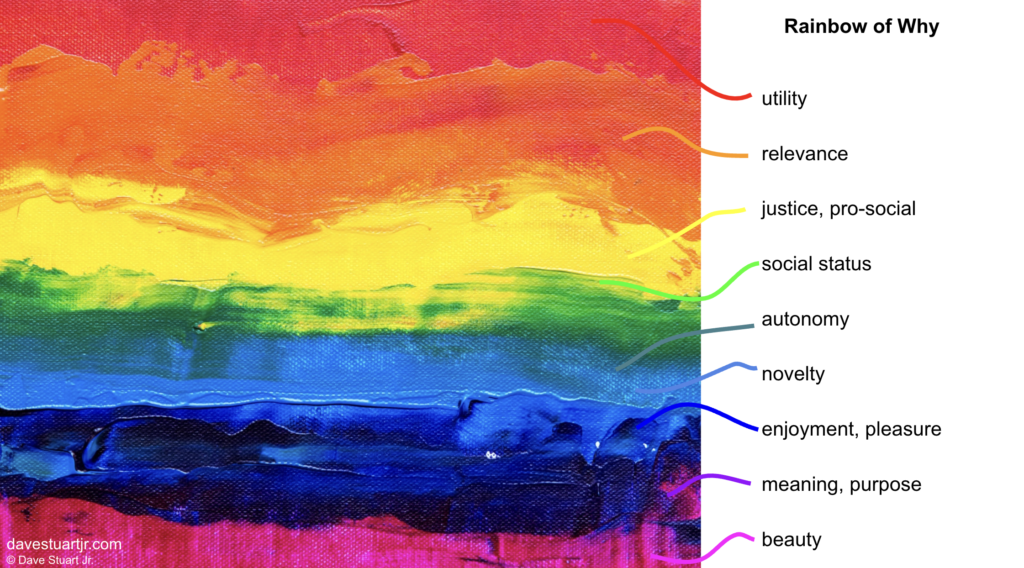The Rainbow of Why can be an overwhelming tool.*

All these colored pathways to Valuing math or science or art class — great.
But…where do I start?
Today, let's try this: start with your own love.
In The Prelude, William Wordsworth writes,
What we have loved, others will love, and we will teach them how.
**
Notice his faith in the power of his own love — his own Value of a thing — and how he expects this power to draw others in through the means of our effortful teaching. Our own love for our subject — our own Value — is the nuclear fission reactor that powers our attempts to teach our students to love (Value) our subjects as we do.
So stoke your own love today. I know, I know — I'm publishing this near the end of a school year. It doesn't matter. Stoke it anyways. It's always a good day for an inner fire.
Why do you teach what you teach?
Why math?
Why science?
Why theatre?
Think on the answer for more than a minute. Talk to someone about the answer. Write out the answer. Draw it out. Speak it out. Mull it over. And over. And over.
Then come up with another one.
Stoking one's love is like tending a fire. If the fire's gone cold, it takes time and work to get it going again. If it's gotten wet, even more time and work.
But the fire's potential is always there. It just takes work to get it going.
Whatever the state of your fire this morning, stoke it. Because we can't give what we don't have.
Best,
DSJR
P.S. Here’s an interesting related idea to “we can’t give what we don’t have” — the Peter Effect.
*The Rainbow of Why is discussed in the Value chapter of The Will to Learn, in which I argue that it is THE most important thinking tool for understanding how human beings come to Value a thing.
**Thank you to David Brooks' The Second Mountain for putting me on to the Wordsworth line. Brooks' book is excellent for teachers who are going through a meaning or purpose crisis.
April Ojeda says
Hey, thanks for this! I talked my English 1 students through the levels of the Rainbow of Why and helped them make relevant connections to their own lives. When they claimed that science and math held no beauty (like I knew they would), I showed them the golden ratio and pictures of fibonacci spirals in action–galaxies, whirlpools, pineapples, sunflowers, etc. Then I asked them to journal about where beauty lies hidden in plain sight in their own lives. I kid you not, they wrote poetry!
Dave Stuart Jr. says
Love this, April!
Diann Espinoza says
Dave, my love stems from Love Himself. The fact that the Creator never stops blowing me away inspires me to discover more and more about creation. How would you suggest I convey that without mentioning His Name and my faith? I do give my little rants about how awesomely interconnected and intricately beautiful Science is and hints that it is not in the least random chance. Do you think that is that sufficient?
Dave Stuart Jr. says
Amen!!! I do think it’s sufficient, Diann. The tiniest things (e.g., mustard seeds) are sufficient in His economy.